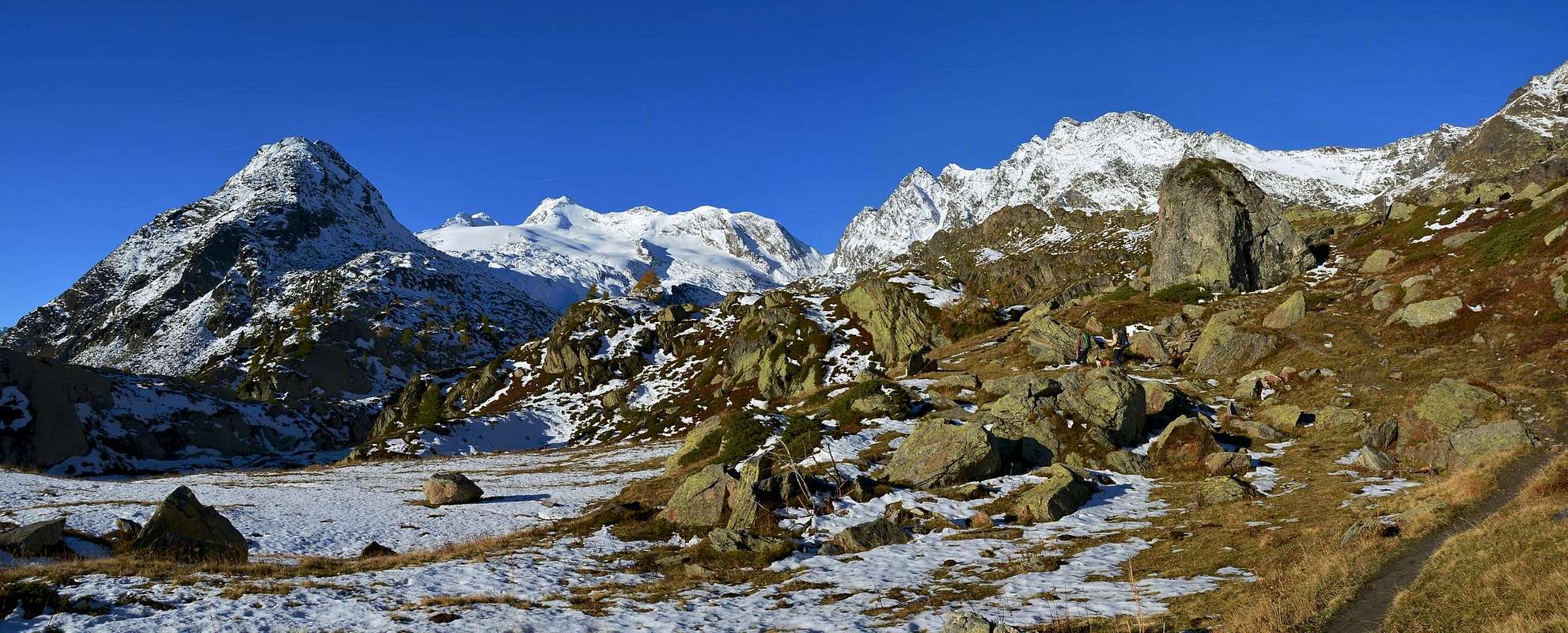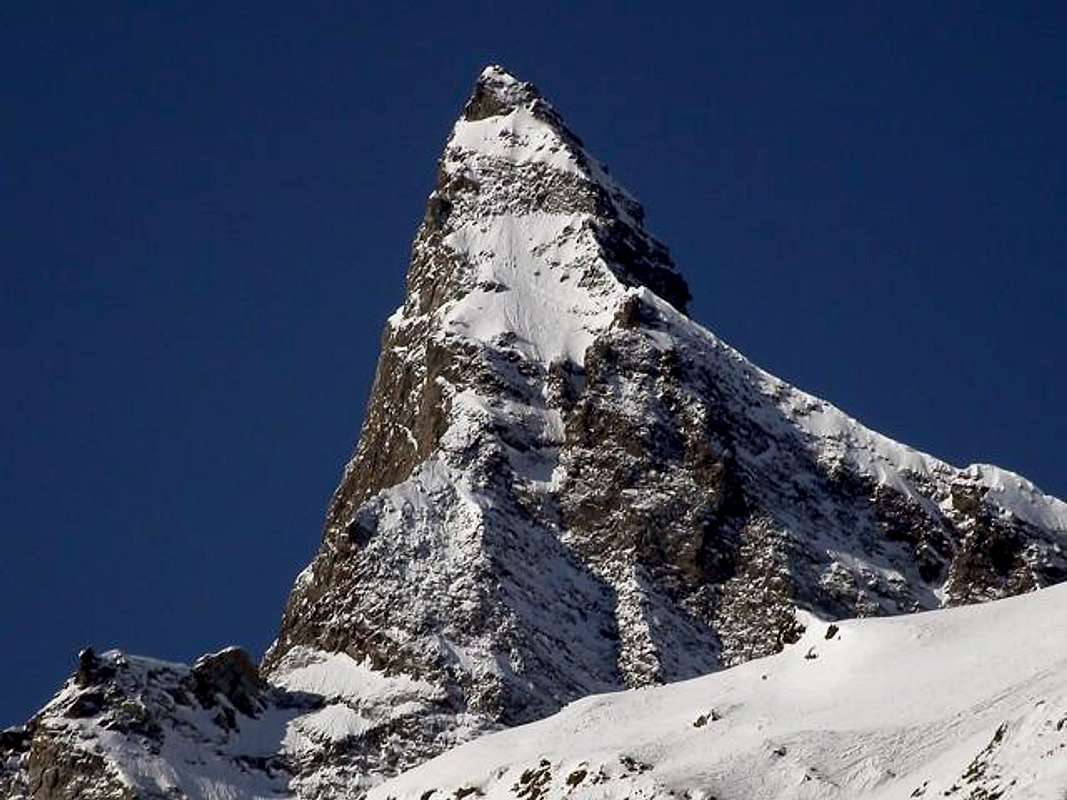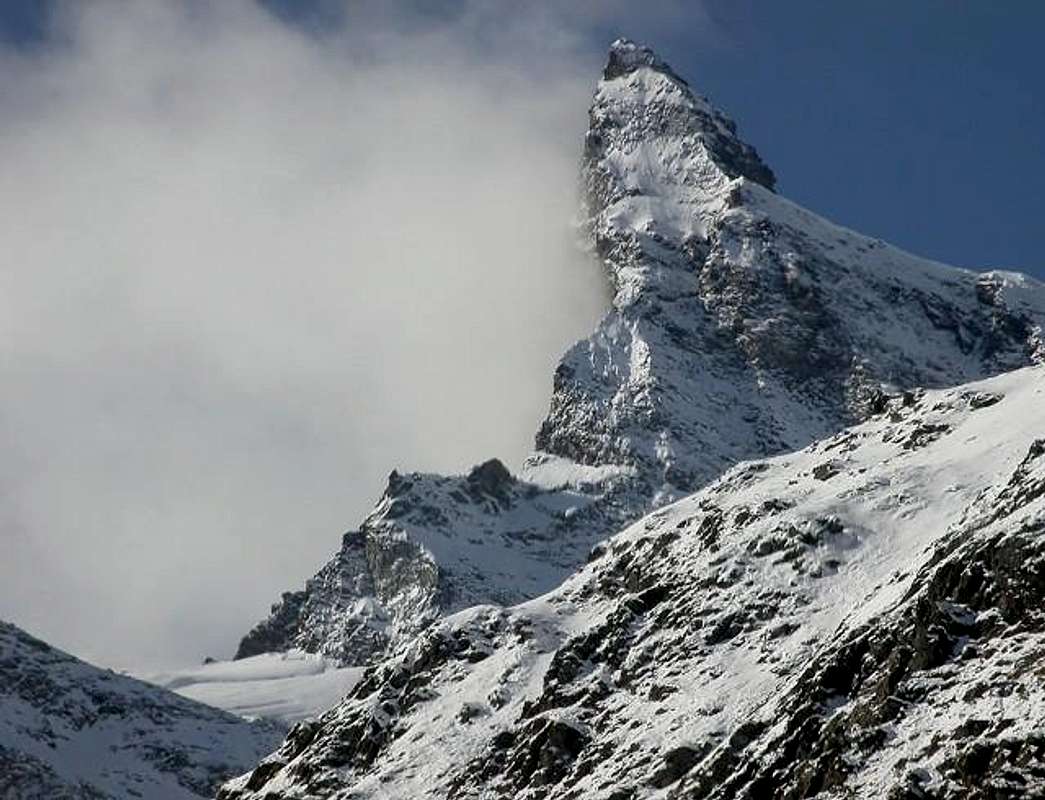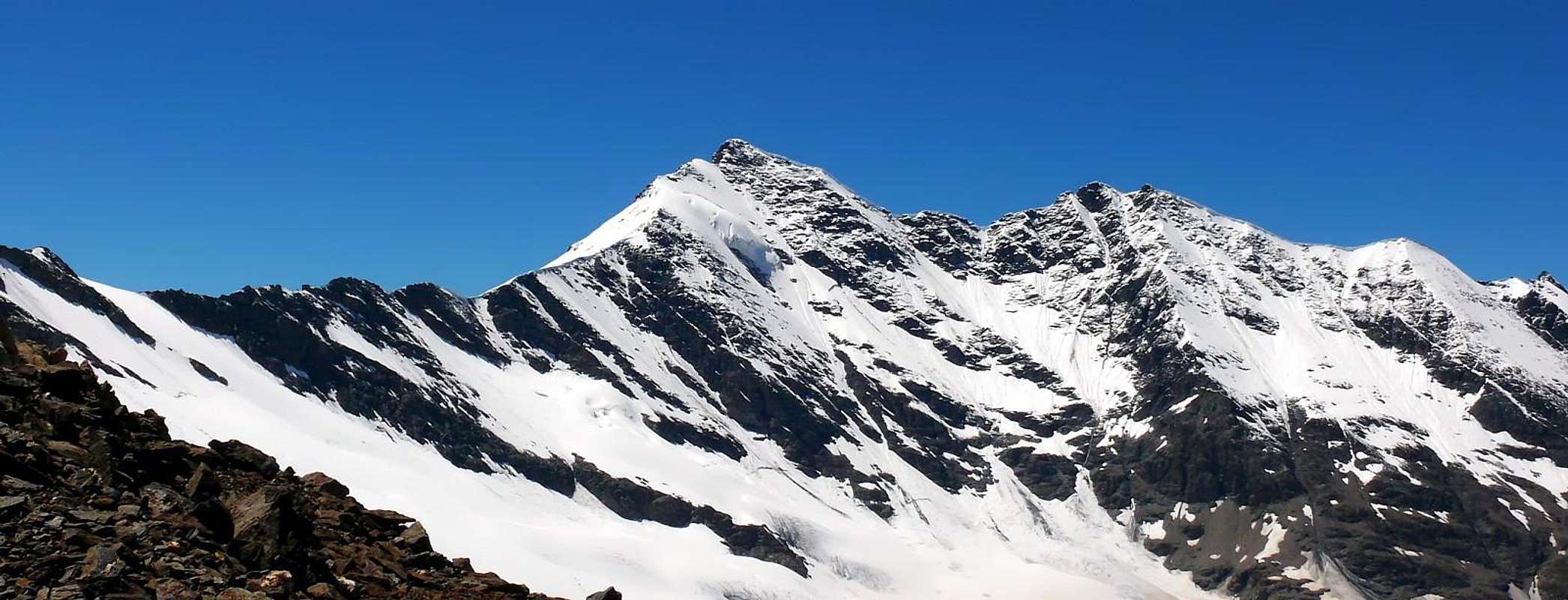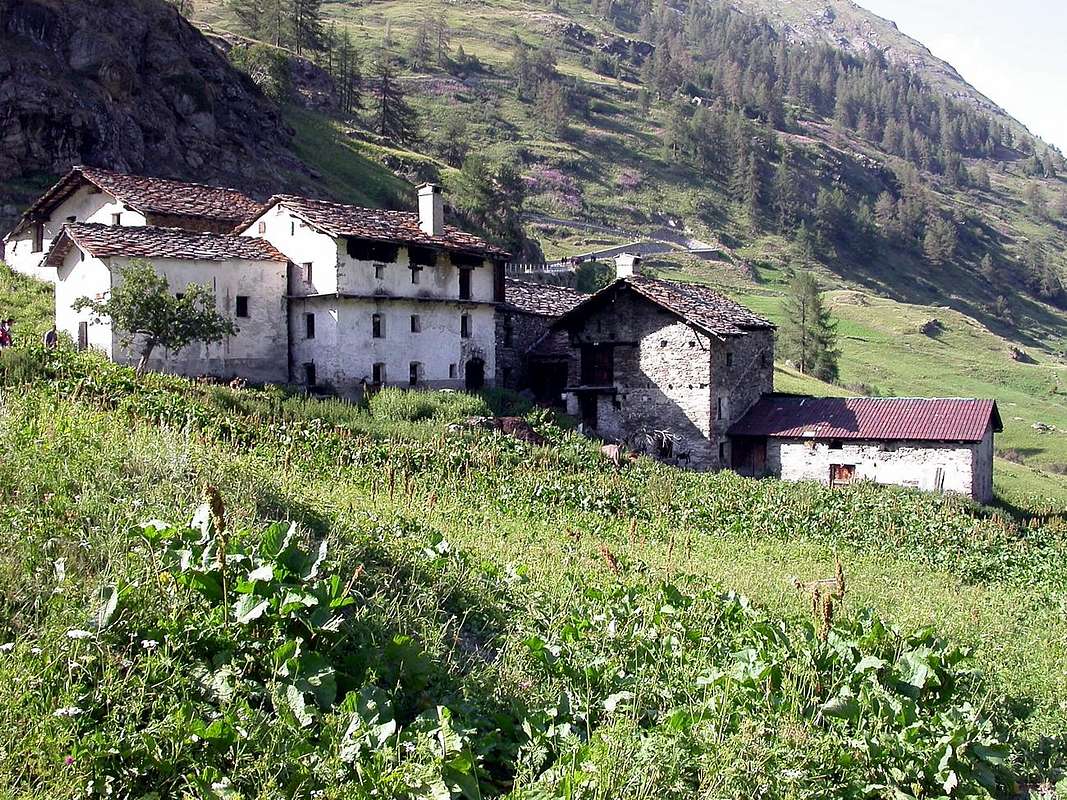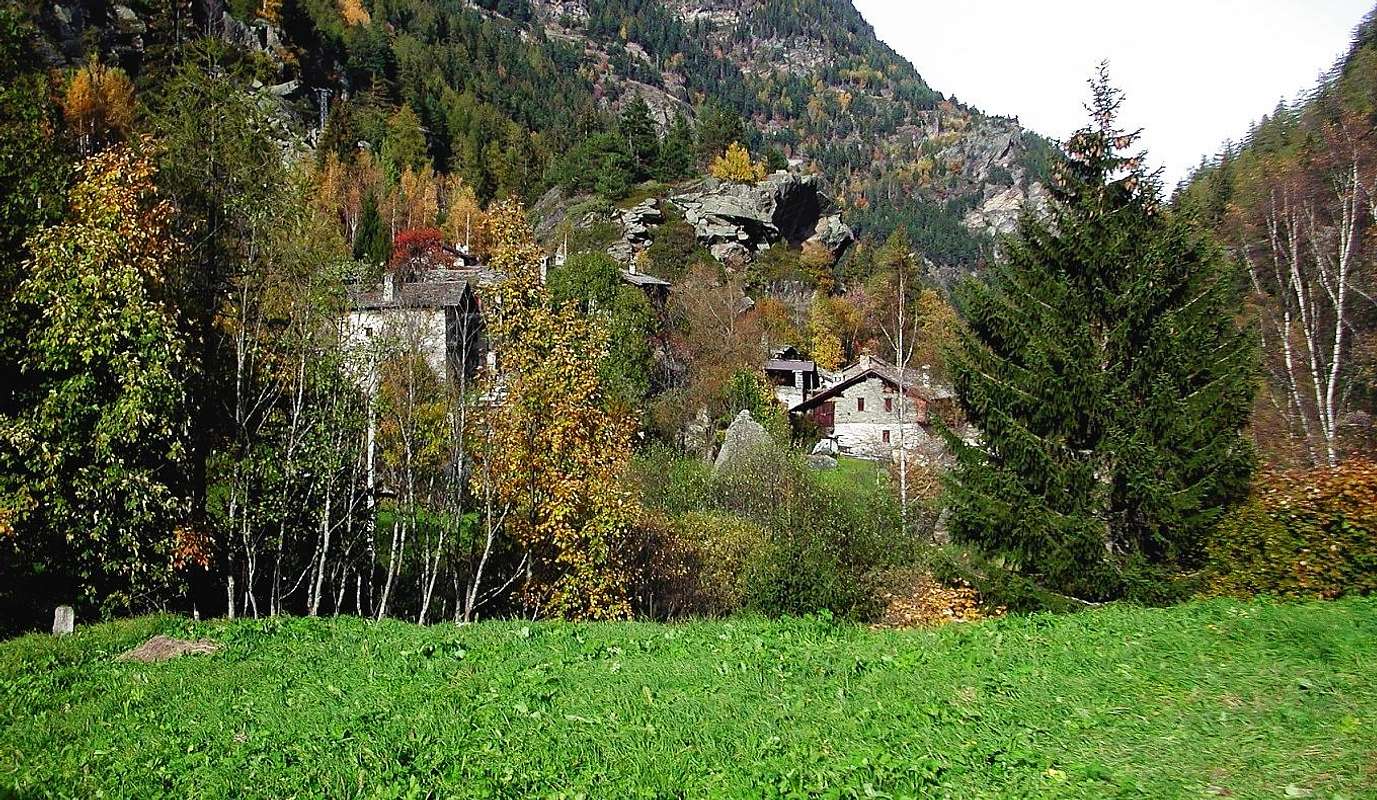-
 5791 Hits
5791 Hits
-
 81.18% Score
81.18% Score
-
 13 Votes
13 Votes
|
|
Area/Range |
|---|---|
|
|
45.63050°N / 7.06394°E |
|
|
Hiking, Mountaineering |
|
|
Spring, Summer, Fall |
|
|
Note
La montagna chiama i suoi figli, ed essi rispondono fedelmente al suo appello… Osvaldo Cardellina, Diario alpinistico, 1964-65 Page texts: @ OsvaldoCardellina "Osva", passed away on May 2, 2022. Page owners: Christian Cardellina e Osvaldo Cardellina. Any updates from September 12, 2022: Antonio Giani, page administrator, friend and climbing companion. Testi della pagina: @ OsvaldoCardellina "Osva", scomparso il 2 maggio 2022. Proprietari pagina: Christian Cardellina e Osvaldo Cardellina. Eventuali aggiornamenti dal 12 settembre 2022: Antonio Giani, amministratore della pagina, amico e compagno di salite. |
Overview
Getting There
- From Torino, Milano, etc: Motorway A5. Exit in Aosta Ovest. Drive to the near Aymavilles. Follow in the direction of Valle di Cogne.
- From Switzerland: through the Grand St. Bernard Tunnel or the homonym Pass). Drive to Aosta, then follow Courmayeur direction on SS.26. Just after Sarre, turn to the left, in the direction of Valle di Cogne.
- From France: through Mont Blanc Tunnel or Petit St. Bernard Pass). It isn't necessary to enter in Motorway A5, you can drive through SS.26 Aosta direction. Before arriving at the Village of Leverogne, follow the sign and turn right towards Grisenche Valley.
- Aeroporto "Corrado Gex" Saint Christophe (Aosta).
Specific Itinerary Road
Whether arriving from West to East that (Aosta SS.26 to 15 km) to reach the Hamlet of Leverogne (740m) and with winding road to reach in succession Garin (796m), Ra(e)voire (950m; gym rock) Villages and, with beautiful views to the ruins of the grim Castle Montmajeur sited on hanging rocky promontory, to reach Villages of Chamençon (1.278m), which is left to the East, and Chamin (1.399m), the next Fraction of Planaval mouth of the vallon, is discarded right and continue to the South to the Villages of Revers (1.530 m), Prariond (1.548m), Céré (1.605m) and La Bethaz (1.615m) to finally reach the Chief-lieu of Valgrisenche (1.661m) and the nearby Village of Mondanges (1.652m), just below the front of the Beauregard Dam.
Sia arrivando da Ovest che da Est (Aosta SS.26 a 15 Km) raggiungere il Borgo di Leverogne (740 m) e con stretti tornanti raggiungere in successione Garin (796 m), Ra(e)voire (950 m; palestra di roccia) e, con bella vista sui resti dell'arcigno Castello di Montmajeur sospeso sul soprastante promontorio roccioso, raggiungere i Villaggi di Chamençon (1.278 m), che si lascia ad Est, e Chamin (1.399 m); la successiva Frazione di Planaval (1.557 m), all'imbocco dell'omonimo vallone, si scarta a destra continuando a Mezzogiorno verso i Villaggi di Revers (1.530 m), Prariond (1.548 m), Céré (1.605 m) e La Bethaz (1.655 m) pervenendo infine al Capoluogo di Valgrisenche (1.661 m) e la vicina Frazione di Mondanges (1.652 m), proprio sotto il fronte della Diga di Beauregard.
The Valgrisenche Valley
The Mountains
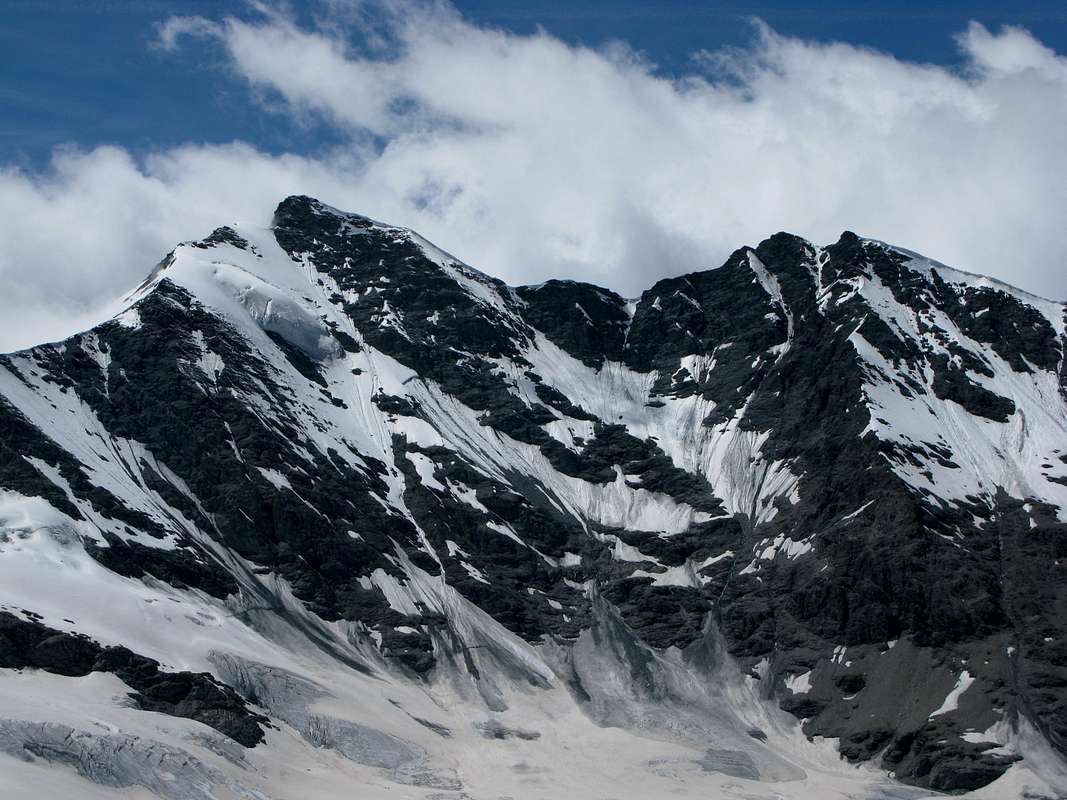
The mountains can be divided into two distinct groups: those located on the orographic right side or on the Eastern watershed Valgrisa/Rhêmes, those on the West between Valgrisa/ Val d'Isere in the first section or between Valgrisa/La Thuile in the second half. The district is closed to the South by the head of the valley, marked by the two passes East and West of Sassière, forms the crest of the French border from spout Traversière and coming to the Great Sassière.
Becca della Traversière (3.337m) - Quota Unnamed 3.191 meters - Pointe Bassac Déré (3.352m) - Pointe Bassac South (3.461m) - GRANDE TRAVERSIERE (3.496m) - Pointe de Bassac North (3.387m) - Truc Blanc (3.405m) - Cime di San Martino (3.363m, 3.341m) Group.
To Northwest Becca di Giasson (3.127m) small Subgroup. To North-northeast Pointe de Barmaver(a)in (3.472m) - Punta Tina (3.523m) - Grande Rousse South (3.552m) small but large Subgroup. To Southeast Becca di Fos (3.457m). GRANDE ROUSSE NORTH (3.607m) - Pointe de Rabuigne (3.261m) Group.
To East Mont Forciaz or Fortchat Oriental (3.244m) and Occidental (3.185m) small Subgroup. To North-northeast Cime de Bouque or Boucs (3.107m) - Becca di They (3.186m) - Becca Laugier or Becca de Changier (3.076m) to Southeast. Becca di Pré d'Amont or Praz-Damon (3.234m) - Punta di Feluma or Feleumaz (3.213m) - Pointe de la Louetta also Becca de Tz(s)aboc (3.214m) Subgroup. To North Quota Unnamed 3.275 meters - BECCA di TOS (3.301m) - Grand Revers (3.164m) - Becca del Merlo or dù Chamin (2.961m) - Mont de l'Âne (2.361m) - Creu de Bouque (+; 1.711m) Subgroup. To North-northwest Becca Verconey (2.925m) small Subgroup.
SUMMITS Succession from Great Sassière to Mount Colombo Group at the end of the watershed South/North between Valgrisa/Val d'Isère/La Thuile Valleys & Dora Baltea Vallons
GRANDE SASSIERE (3.751m) - Petite Sassière (3.672m) - Pointe Nant Cruet (3.610m) - Pointe des Plattes or Pattes des Chamois (3.567m) - Becca di Suessa also Schuetse (3.423m) - Becca de Pertcha (3.028m) - Pointe de Serrù or de Maurin (3.227m) - Mont Quart (2.790m) Group. To Northwest MONT ORMELUNE (Southeast also Pointe du Soudzei (3.256m), Central Ormelune (3.230/1m) and Northwest or Pointe de l'Archeboc 3.278m) - la Rocher Brune (2.720m) - Bec de l'Ane and Gran Becca du Mont (3.158m, 3.209m) - Arête du Loydon (3.172m) Group.
To North-northeast Becca du Lac (3.405m) - TESTA del RUTOR (3.486m) - Château Blanc (3.406m) - Doravidi (South 3.432m and North 3.441m) - Flambeau (3.315m) - Pointe Chenal (3.207m) - Punta Nera (3.262m) - Punta Bianca (3.361m) - Petit Paramont (about 3.255m) - MONT PARAMONT (3.301m) Subgroup.
To Norteast Mont Pit (2.814m) - Pointe de la Crosatie (2.933m) - Monte Valletta (2.521m) - Mont Brolliat (2.352m) small Subgroup. To East Bec Taillà (2.983m) - Tour du Tighet also Tignet (2.976m; Mont Large (2.213m) to Northeast, small watershed between Tillac/Crétaz Vallons, then out of the Valgrisenche as well as Monte Valletta and Mont Broillat) - Pointes de Faveroy (Southwest about 2.230/40m and Northeast about 2.200/10m) - Torre Tonda (2.583m) - Monte Colombo (1.841m) Subgroup.
The passes

The glaciers
The vallons
Valgrisenche Valley & surroundings Les Combes Vallon: from Grand Haury (1.197m) to Les Combes (1.323m) and in Southwest Combientse (1.783m), Plan Bry (1.918m), in Southeast Maison Crou (2.219m), with paths; from this through North-northeast Ridge Mont de l'Ane (2.361m), Cross 2.439 meters, with traces, below Quota 2.690 meters and, through North Crest Becca of Merlo also of Chamin (2.961m), with debris, traces and small rocks, with snow rope required. Tos Vallon: from main road to Valgrisenche alternative to Chamençon (1.236m), Chamin (1.399m), Boregne (2.000m) Villages, with farms dirt road; from this in Southeast into Tos Vallon , pond 2.812 meters, Tos Glacier to North Face of Tos Becca (3.301m), classic ski-mountaineer route.
Molti sono i valloni che scendono perpendicolarmente verso l'asse centrale della Valgrisenche. Li vediamo distintamente sottolineando con un tratteggio le loro peculiarità; non dobbiamo dimenticare che ogni uno di essi vive una realtà particolare, pur essendo all'interno della stessa comunità. Daremo qualche piccola informazione e qualche suggerimento, senza con ciò privarvi del fascino della scoperta personale frequentando i medesimi. Infatti non esiston solo le cime, i colli ed i ghiacciai, bensì, se siete attenti osservatori, ognuno di essi saprà offrirvi delle situazioni e delle notizie indipendenti e ricche, differenziando una dall'altra. La configurazione di questi, iniziando dal Nord e dal divisorio con la Val di Rhêmes, può essere raffigurata in questo modo: dopo l'alta collina sopra i Villaggi di Arvier con quelli di Grand'Haury-Pileo-Les Combes si entra progressivamente nella Valgrisa; lasciando in alto il bacino circolare compreso tra Becca del Merlo, Becca di Tos e quella di Verconey, incontriamo una serie di valloni ripidi e poco percorsi che arrivano fino alla Punta di Feleuma ed alla sua Cresta Ovest discendente alla Becca des Quatres Dents. Al di là di questa, valloni più "aperti" si distendono dal divisorio fino alla Punta di Rabuigne; oltre i tre Ghiacciai di Mont Fortchat, Invergnaou e Giasson comprendono un abbastanza vasto circo glaciale, dopo il quale altri valloni, pur sempre selvaggi ma più "dolci", conducono alla testata della valle; questa é rappresa tra i due Ghiacciai di Bassac Déré, Glairetta e Vaudet ai piedi della Grande Sassière ed all'inizio dello spartiacque con la Francia. Nel lato opposto od Occidentale, dopo le aspre pendici Orientali del tratto tra la medesima e la Becca di Suessa, si spalanca la porta del colle con lo stesso nome o Col Vaudet; i successivi e susseguenti si aprono a raggiera raggiungendo il Col du Mont all'apice del grande Vallone di San Grato e del parallelo dell'Arp Vieille, all'inizio dello spartiacque con la Valle di La Thuile. La lunga Cresta Est che scende dalla Testa del Rutor verso il Rifugio degli Angeli (ex Rifugio Scavarda andato in fiamme) divide questo ultimo vallone da quello dei Laghi del Morion e dal seguente dell'Orfeuille, ai piedi del Ghiacciaio del Château Blanc; questo, digradando a Settentrione, raggiunge il Vallone del Fond-Planaval, dove i ghiacci scompaiono del tutto. Una costiera selvaggia ed abbandonata chiude il circolo della valle con piccoli valloni boschivo-rocciosi che raggiungono il Monte Colombo sopra la Valle Centrale. Questa é la Valgrisa, che si apre e restringe con un'ampiezza che va da 3 Km e ne raggiunge 10 nel punto della sua massima espansione.
The torrents
There are many glaciers, but even more the torrents that descend on the valley floor to the Dora Valgrisenche making itself richer and more impetuous. Some are born directly from the overlying ice, others by a small lake that is formed by the continuous and gradual withdrawal of the same, and still others from underground sources at the time of taking life instantly appear in the light; individually, then, along the way, you gather together forming water courses more readily apparent until you take the dignity of owning a name. But once all distinctly him, because they were the essential points for grazing and watering when the chief shepherd gave directions to the "beiciullì" (young shepherd), where to take that day, the cattle did it with great precision and detail. The whole mountain was animated and permeated and entered into communion with the daily life of man. Cascades of water from all that, even without a specific name (once they had when the territory was known in the palm of your hand for grazing), flock to the valley with a twinkle extraordinary to say the least. A dance of the water without any direction and no director from above, but with a particular choreography that only Mother Nature can offer.TORRENTS Succession from North on watershed Rhêmes/Valgrisa Valleys to West
From Tos Glacier Boreigne Torrent to Chamin-Gasolay Villages. From Becca Verconey Ramoua Torrent to Ramoua/Tséresoulaz Villages. From Becca of Tos Torrent Theumelley to Gerbelle Village. From Becca of Pré Damon Torrent Praz Londzet to Roncher Village. From Becca of They/Point Rabouigne Torrent de Bouque to fork 1.715 meters on Beauregard main road, Eastern shore. From Mount Forciaz/Invergnaou/Giasson Glaciers Torrent Mount Fortchat to Chapuy Village. From Southwestern slopes of Giasson Glacier Torrent Tsalé and La Tsa to Tsalé Pastures. From Becca Giasson Torrent Giasson to Saxe Savoie Pastures. From Saint Martin Glacier and Lake Torrent Saint Martin to Saxe Ponton-Saxe Savoie Pastures. From Northern Point Bassac Torrent of Mans to alternative 2.172 meters. From Bassac Glacier, under Great Traversière, Torrent Bassac la Cuire to Vaudet Alp, neighbor Bezzi Refuge. From the two Glaciers of Bassac Déré Torrent Bassac Déré to upper part of Valgrisenche Doire.
Succession from South on watershed Valgrisa/Val d'Isère Valleys to North
From Glairetta Glacier, between Becca of Traversière and Great Sassière, to Sources of Valgrisenche Doire. From Vaudet Glacier, under Great and Little Sassière, Torrent Vaudet to Valgrisenche Doire.
Succession from North on watershed Valgrisa/Val d'Isère Valleys to East
From Glacier de Traversaz, below Fond Pass Torrent Traversaz to Doire. From Glacier Lavellaz, under Nant Cruet Point, Torrent Lavellaz to Doire. From Glacier Pattes of Chamoises, under Plattes of Chamois Point, Torrent Pattes of Chamoises to altitude 2.272 meters above Bezzi Shelter. From Vert Glacier and Lake, below Becca of Suessa, various small Torrents Vert to Doire, under Vaudet Alp. From Vaudet Hill Torrent Grapillon to (over) Saxe Ponton Pastures. From Becca Percià also Pertcha Torrent of Gran Coussa to Saxe Savoie Pastures. From little Loch Noir, below Loch Noir Pass, Torrent Loch Noir to Mont Blanc Alp. From Maurin Glcier, under Maurin Point, Torrent Maurin to alternative 1.894 meters above the Doire. From Saint Grat Vallon (Suzei-Ormelune-Archeboc Glaciers, Col du Mont, Saint Grat Lake and Sachère Glacier) Torrent Grand'Alpe to Usellières Village, near the Southern side of Beauregard Dam.
Succession from North on watershed Valgrisa/La Thuile Valleys to East-northeast
From Arp Vieille Vallon Torrent Arp Vieillle to Meillares Village and Dam. From Morion Lakes, below Angels Refuge, Torrent Morion to Valgrisenche Chief-Lieu. From Morion Glacier, under Testa of Rutor, Torrent Miollet to Miollet (renowned waterfall) and Céré Villages. From Château Blanc Southern Glacier and Point Torrent Orfeuille to Revers Village. From Château Blanc Northern Glacier-Planaval Pass Torrent Glacier to Glacier Alpages. From Fond Loch Torrent Fond-Planaval to Planaval-Roset Villages. From Tignet or Tighet/Tonda Towers Torrent of Clusaz to Planaval-Maison Forte Village.
The Villages
The inhabitants
And tell them what? Who are shy and that women sew and embroider draps (traditional clothes and napkins) who sew the draps then sell at the Fair of Saint Orso in Aosta, January 31th, as is the case for over 1000 years? The patience to make these embroideries requires long periods of solitary reflection inside very long winters? That in order to study, as did my partner Germano Bois, current Secretary to Valgrisa Municipality, when together we attended the of Elementary School Teachers at Aosta while I quietly got up at 7.00 am in the morning he had to do two hours earlier? That's when it begins to snow you stay out of the world for almost five months? Now that you are a lucky because television does not make you feel different from others and completely out of this world? Why do you widen the road sweeping the snow? For all these reasons, my dear inhabitant of Valgrisa, you've lost your roots. Forever. Bury your dead in due time, but do not spend more vigils near the fireplace with fire made with wood that, in a hurry, you had to gather in the nearby forest. Before the sun goes down ...Campings
Remember that free camping is forbidden (except for emergency reasons, over 2.500m, from darkness until dawn).
Mountain Conditions
- Meteo: you can find all the needed informations at the official site of the Valle d'Aosta Region:
- Valle d'Aosta Meteo
Books and Maps
BOOKS:
- "Il Parco Nazionale del Gran Paradiso (Valli Soana-Orco-Rhêmes-Valgrisenche)" di Giulio Berutto, I.G.C. Torino 1979.
- "Guida dei Monti d'Italia – Alpi Graie Centrali" di Alessandro Giorgetta - Club Alpino Italiano/Touring Club Italiano, 1985 (in Italian).
MAPS:
- Kompass "Gran Paradiso Valle d'Aosta Sentieri e Rifugi" Carta turistica 1:50.000.
- L'Escursionista "Valgrisenche Val di Rhêmes" Carta dei sentieri (n° 3) 1:25.000.
- Enrico Editore Ivrea-Aosta "Gruppo del Gran Paradiso" 1:50.000.
- I.G.C. Istituto Geografico Centrale "Valsavarenche-Valle di Rhêmes-Valgrisenche" Carta dei sentieri e dei rifugi (carta n° 102) 1:25.000.
Important Information
- REGIONE AUTONOMA VALLE D'AOSTA the official site.
- FONDAZIONE MONTAGNA SICURA Villa Cameron, località Villard de la Palud n° 1 Courmayeur (AO) Tel: 39 0165 897602 - Fax: 39 0165 897647.
- SOCIETA' DELLE GUIDE DI VALGRISENCHE
- A.I.NE.VA. (Associazione Interregionale Neve e Valanghe).
Useful Numbers
- Protezione Civile Valdostana località Aeroporto n° 7/A Saint Christophe (Ao) Tel. 0165-238222.
- Bollettino Meteo (weather info) Tel. 0165-44113.
- Unità Operativa di Soccorso Sanitario Tel. 118.




